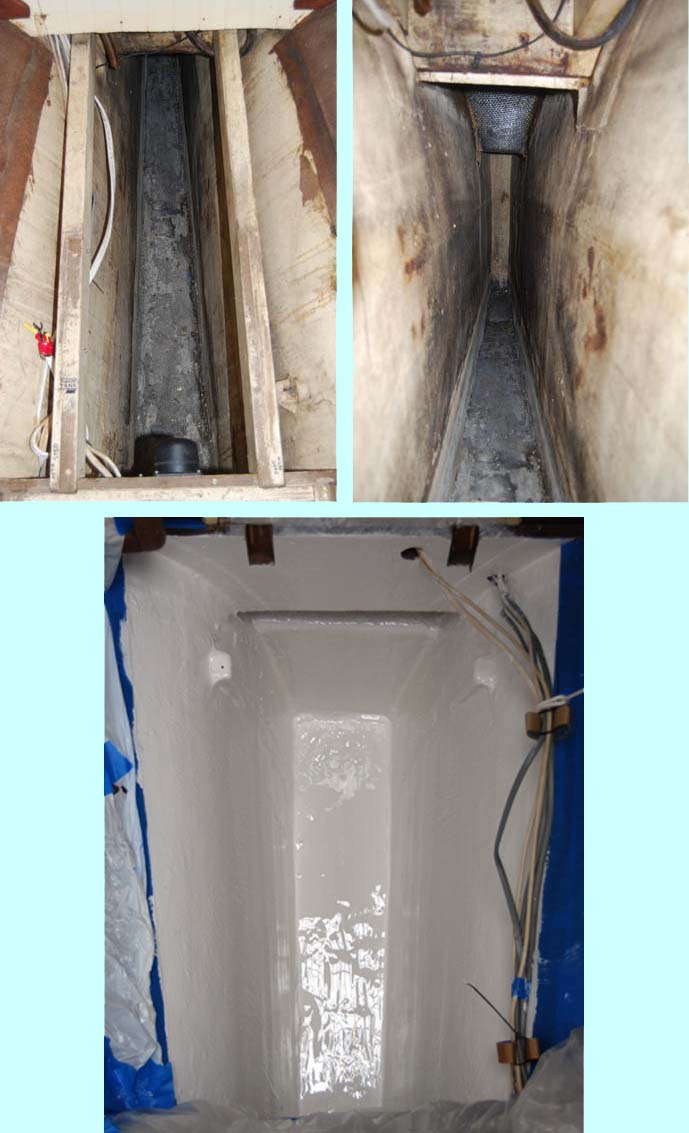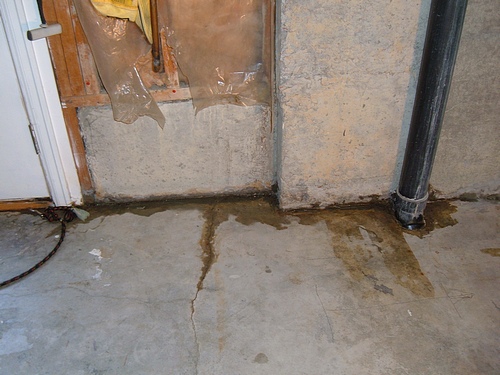
GOOGLE SITE SEARCH - Click here

Epoxy Paint - options info buy!
epoxy paint source site - START HERE
| Homepage | Epoxy Paint | Garage Coatings | Epoxy Resin Systems | Clear Marine Epoxy | Questions and Help |

(an epoxy paint example)
This epoxy coating is a nuclear approved, Industrial Grade, solvent free epoxy paint. These epoxy resin case studies show the long history of this epoxy paint in many industrial applications, including uses as a sheet pile coating, power plant paint, epoxy tank coating, potable water epoxy systems, manhole coating and manhole rehab, lift station coating and repair, wastewater applications, and sewer - sewer line epoxy lining.
Other major common applications for this epoxy paint is as a fiberglass hull marine barrier coat and a spot repair
epoxy paint for swimming pools and spas, applied underwater.

Product data sheets and MSDS on most products mention are available - CLICK HERE
Questions? Email us! Click Here
NSP 120 (tm) AKA Water Gard 300
epoxy paint case studies
Case 1: sheet pile repair CLICK HERE


| CLASSIFICATION | HIGHEST QUALITY "A GRADE" MAINTENANCE AND BARRIER COATING --- TOP PERFORMANCE PREMIUM GRADE CYCLOALIPHATIC BASED CURING SYSTEM EPOXY ADDUCT FOR THE MOST DEMANDING APPLICATIONS INCLUDING CONSTANT IMMERSION |
| % VOC | SOLVENT FREE, 0% VOC, 100% SOLIDS |
| SHIPPING/EXPORTING | NON HAZMAT TO SHIP, CAN BE SHIPPED WORLDWIDE, CAN BE PRIVATE LABELED |
| VISCOSITY | THICK BUT BRUSHABLE, ROLLABLE |
| STND COLORS | WHITE, LIGHT BLUE, |
| WET APPLICATION | CAN BE APPLIED UNDERWATER |
| MIX RATIO | 2 TO 1 BY VOLUME |
| STND PACKAGING | STANDARD PACKAGING IS 3 GALLON UNITS. OTHER SIZES AVAILABLE (1.5 QUART - 3 QUART) |
| MISC. INFO | NUCLEAR (DBA) AND 'FISH TANK' APPROVED UNDER OTHER LABEL NAME |
| PRIMING | CONSIDERED SELF PRIMING BUT OFTEN APPLIED OVER SOLVENT BASED EPOXY PRIMER (ESP 155 or EPOXY PRIMER) TO IMPROVE BOND ON OLD, WEATHERED, POROUS, WEAK OR PATCHED SURFACES |
Catalog of other epoxy paints (epoxy paint web storefront)
|
Epoxy "Stab Brush" -- "Regular Brush" |
|
Use with products on this page |
|
buy separately or include with your order |
|
|
|
STAB BRUSH - 3 inch wide with 3/4 inch bristles. Most epoxies are too thick for a regular brush. Stab brushes allow you to push and move the epoxy around and 'stab' or poke it into cracks, voids, and corners |
| REGULAR BRUSH - 2 inch wide and extra thick with synthetic bristles. Use with varnish, paints and thin epoxies. Priced for disposable use. |
|
Find Stab Brushes and Regular Brushes in our MARINE CATALOG or in our HOME/COMMERCIAL CATALOG |
|
Goto our 3rd party storefront and purchase in the MISC SECTION |
need to learn more about epoxies??
--- visit these third party sites ---
(EVERYTHING-EPOXY.INFO --- Intro to basic epoxy resin types)
also visit the EPOXY GURU
 |
Google Epoxy Specific Search |

Site Co-Sponsor - PEP .
DID YOU KNOW...
Epoxy coatings are used because of their
outstanding chemical resistance, durability, low porosity and strong bond
strength.
Epoxies consist of a ‘base' and a ‘curing'
agent. The two components are mixed in a certain ratio. A chemical reaction
occurs between the two parts generating heat (exotherm) and hardening the
mixture into an inert, hard ‘plastic'.
Epoxies yellow, chalk (or more commonly least lose their gloss), in direct
sunlight (UV). The yellowing can be a real problem. For pigmented epoxies
select colors that are dark or contain a lot of yellow (such as green). Even
clear epoxies will yellow and cloud up. Often epoxies are top coated with
latex or urethanes that will retain their color and attractive gloss. This
is particularly true if color coding or matching company colors is
important.
Epoxies will harden in minutes or hours, but complete cure (hardening) will
generally take several days. Most epoxies will be suitably hard within a day
or so, but may require more time to harden before the coating can be sanded.
By their nature, epoxies are hard and brittle. Additives can be added to
epoxies that make them less brittle, but generally at the loss or reduction
of other positive epoxy properties such as chemical resistance.
Other clues of cheap epoxies include ‘induction time' (after mixing the two
components the mixture must sit for several minutes to ‘self cook' before
being applied).
The best time to recoat epoxy is within about 48 hours after the initial
coat. Because epoxies take days to reach full cure, a second coat applied
shortly after the first coat will partially fuse to the first coat rather
than forming a simple mechanical bond.
End users can thicken epoxy with many things, Tiny glass spheres, known as
micro-spheres or micro-balloons are commonly used. Besides thickening, their
crushable nature makes sanding the hardened epoxy easier. On the downside,
they work like tiny ball bearings, resulting is sagging and slumping.
Another thickener is fumed silica (a common brand name is Cabosil (tm))
which looks like fake snow. About 2 parts fumed silica with one part epoxy
will produce a mixture similar in texture and thickness to petroleum jelly.
Micro-spheres and fumed silica can be combined together.
Fisheyes are areas on a painted surface where the coating literally pulls
away for the substrate leaving a coatingless void or fisheye. Often fisheyes
are caused by surface contaminants such as a bit of silicon, wax, or oil. I
have also seen them on clean plywood where epoxies paints have been used as
sealers and the problem might be due to uneven saturation (soaking-in) of
the epoxy into the wood. Surface tension plays a big part in fisheyeing.
There are some additives that can be mixed into the epoxy that will reduce
surface tension. Likewise, on wood, applying several coats of solvent
thinned epoxy, instead of one coat of unthinned epoxy, seems to work well.
Applying a thick coat of epoxy over a contaminated fisheye surface will bury
the fisheye but expect the coating to peel away in the future. As a rule of
thumb, always suspect some sort of surface contamination as the primary
cause of fisheyeing.
Adding a bit of solvent to a solvent based or solvent-free epoxy is
something that most manufacturers would not officially approve of and
something that might not work with all epoxies. However, it can be done
(unofficially) with the epoxies I deal with. Adding solvent to these epoxies
will: 1) thin them out; 2) increase pot life; 3) allows them to flow off the
brush/roller a bit more smoothly; and 4) perhaps allows them to ‘soak-in',
penetrate, or may be soften, the substrate just a little bit. Not change is
visible in the epoxy unless 12% or greater solvent is added. With that
amount of solvent, the epoxies no longer cure with a glossy finish.
It is best to use epoxies with a mix ratio close to 1 to 1 as opposed to
something 4-1, 5-1, etc. because errors in the mix ratios can be more
pronounced with the latter. That said, no matter what the mix ratio is, some
epoxies are more forgiving of mix ratio errors than others. One ‘trick' of
epoxy vendors with odd or very sensitive mix ratios is to sell calibrated
pumps that disperse the epoxy components in exact amounts.
How Thick? How thick should your coating be? Economics play a major role in determining how much coating to apply. One U.S. gallon contains 231 cubic inches. That's only 1.6 cubic square feet of surface at one inch thick and that's also assuming a solvent-free product. If the product is 25% VOC (i.e. 25% solvent) then dry thickness/coverage will be 25% less. Again, assuming a 1/4 inch thick coating (250 mils) maximum coverage will still be only 6.4 square feet per gallon. A solvent-free (100% solids) epoxy coating applied at 16 mils will cover 100 square feet per gallon (note: the wall paint in your office is probably 2-4 mils). While thick coatings sound like a good idea, they use so much product that they must be made very cheaply so that coating 1,000 or 10,000 square feet can still be done at a competitive price. A high quality, fairly expensive product with a coverage rate of 100 sq. feet or more per gallon, on the other hand, will have a low enough cost per sq. foot to provide both economy and top quality.
| Homepage | Epoxy Paint | Garage Coatings | Epoxy Resin Systems | Clear Marine Epoxy | Questions and Help |
Search the EPOXY-ONLY World Wide Web search engine
for your Epoxy Related Search term
CLICK HERE FOR EPOXY RELATED SEARCHES
Sponsor Links:
the "Epoxy Guru"
Paul Oman - MS. MBA
A.K.A. “Professor E. Poxy” -- "The Old Goat" -- "Epoxy Guru"
epoxies since 1994
Member: NACE (National Assoc. of Corrosion Engineers)
SSPC (Soc. of Protective Coatings)
Email The Epoxy Guru, or call him to talk or purchase products mentioned:
Call
603 435 7199 anytime
Sponsor Links:
please support our sponsors!
|
ONLINE PRODUCT CATALOGS PROGRESSIVE EPOXY POLYMERS, Inc |
|
|
ONLINE STORE Purchase Here ------ or CALL 603 435 7199 ------ HOME PAGE |
|
|
Marine Catalog |
|
*
home
page of marine catalog section (blue background)
|
|
|
Section One
MARINE - CLEAR EPOXIES
Section Two FILLERS THICKENERS ADDITIVES
|
|
|
MASSIVE BOAT HOW TO - ISSUES - HELP WEB LINK SITE |
|
|
Residential / Commercial / DIY Catalog |
|
*
home
page of residential/commercial catalog section (brown background)
|
|
|
Section A
EPOXY PAINTS
|
|
|
WEB
EPOXY
FLOOR ISSUES LINKS SITE --- WEB EPOXY REPAIR LINKS SITE |
|
|
-------
BY SUBJECT
INDEX HELP SITE |
|
|
top selling favorite products for your every need Buy Talk Chat Support EMAIL or 603 435 7199 American manufactured, distributed, and sold epoxies and coatings. Your business helps small American Family Businesses - Thank You! |
(QUESTIONS, ORDERS, ETC. WE CHECK EMAILS MULTIPLE TIMES EACH DAY AND ON WEEKENDS/HOLIDAYS)
Need More?
Ask the EPOXY GURU
Ask Professor E.Poxy
|
Let's stay connected. It's a win-win situation. Receive our online NEWSLETTER by emailing us your name and email address. |
NOTICE: Legal notices, Terms of Service, warranty information, disclaimers, health warnings, etc. are required reading before using web site, ordering and/or using Products. Any such use and/or ordering, online or by telephone, shall constitute acceptance and knowledge of all such terms.
CLICK HERE to access these terms. Please note: Whenever you purchase from this web site, and with each new purchase, you are granting us full and complete permission to add you to our email newsletter list at our option.
RETURNS: call or email for authorization to return. Returns are subject to a 25% restock fee. Customer pays return shipping and must comply with federal DOT shipping requirement/labeling for hazmat epoxies under penalty of fines and legal action.